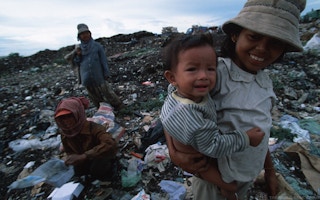“Much of what is called ‘aid’ is now spent inside the UK. This is shocking for the UK’s reputation and catastrophic for many of the world’s (very) poorest,” said former Conservative aid minister Rory Stewart on Twitter.
Britain’s Conservative government reduced overseas aid from 0.7 per cent to 0.5 per cent of gross national income (GNI) in 2020 in order to free up more cash for domestic spending during the Covid-19 pandemic, despite a law that enshrined the higher figure.
“
The UK government needs to restore aid spending to 0.7 per cent of GNI to prevent a continual yearly cycle of uncertainty and project cuts, which leads to devastating consequences for the world’s poorest people.
Richard Watts, development finance expert, Save the Children
The move slashed billions from the annual foreign aid budget, and has impacted almost all international programmes dealing with global health and humanitarian work, according to Bond, a network of UK development agencies.
Prime Minister Rishi Sunak, who oversaw the cut when he was finance minister, said at the time that foreign spending should return to 0.7 per cent of economic output by 2024-2025.
Aid and justice groups say the shortfall would be a huge blow to poorer countries as they struggle to recover from the pandemic and grapple with a global cost-of-living crisis exacerbated by the war in Ukraine.
Here are all the details:
How much does Britain spend on overseas aid?
In 1970, Britain pledged to spend at least 0.7 per cent of GNI on foreign aid as part of a UN pact.
It is among 30 wealthy countries including the United States, Germany and Japan that have vowed to meet this minimum commitment each year.
Britain’s overseas aid spending last year totalled $15.8 billion, down from $18.6 billion in 2020, according to 2021 data from the Organisation for Economic Co-operation and Development (OECD).
How does other countries’ aid spending compare?
Several countries have exceeded the UN aid target including Germany (0.74 per cent), Luxembourg (0.99 per cent), Norway (0.93 per cent) and Sweden (0.92 per cent), according to the OECD.
The United States was the biggest cash donor last year. It spent $42.3 billion, followed by Germany ($32.2 billion), Japan ($17.6 billion), Britain, and France ($15.4 billion).
Total official development assistance (ODA) in 2021 rose by 4.4 per cent from the previous year, the highest figure on record, the OECD said. The spike was mostly due to funds being spent on Covid-19 vaccine donations, it added.








